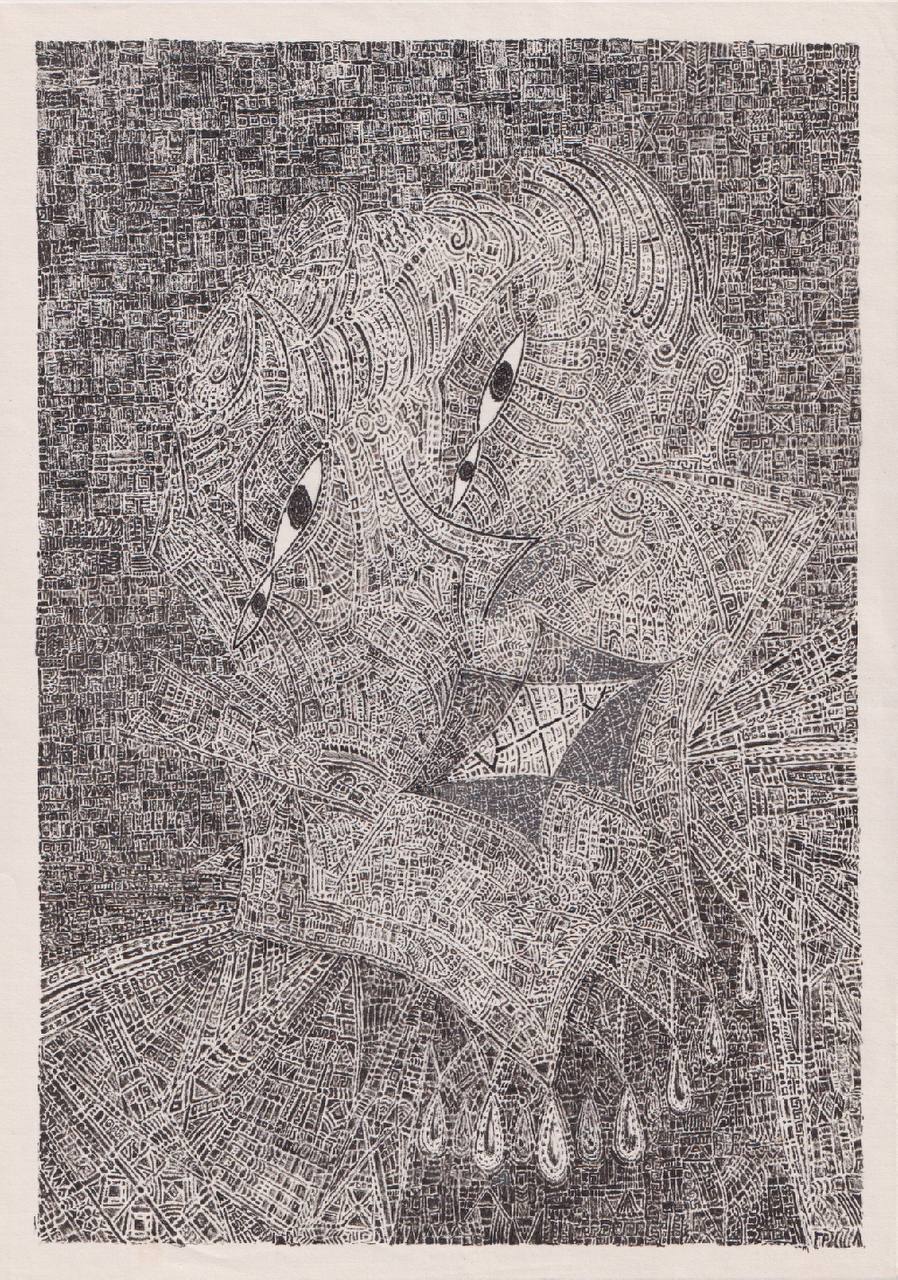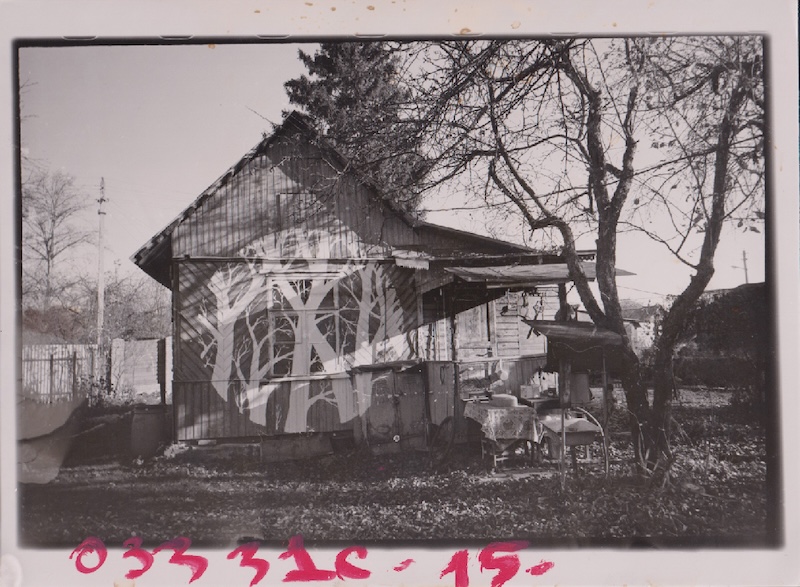
When did your love towards art start? Tell us about your path as an artist
Love towards art came to me with graffiti. Wouldn’t say that it was a clear straight path — at that time, in the beginning of the 00s, street practices were out of the interest of Russian institutions. Even me, I couldn’t call myself an artists for a long time, even in the 2010s. It was more like this — graffiti as some kind of community introduced me to those who began their active formation in the modern art in the mid-noughties - 2 of my friends Sergey Sapozhnikov and Roman Ess, you can say they became guides for me. I was impressed by their artworks and views on art.
How did you start your collection? What was the first artwork you purchased?
The artworks by Sergey Sapozhnikov and Roman Ess became the first things I had in my collection.
Sergey Sapozhnikov, Untitled, 2006-2007, hand-print, 37 x 30 cm
What are the ways you choose the artists for your collection? Are they mostly your friends?
I’d say like this: my collection is a certain coordinate system, the result of my communication and friendship with other artists. Artworks, artifacts, and even some notes are either an act of friendly exchange, communication, or the results of my joint work with this or that artist.
What are your favorite mediums?
It’s difficult to choose one favourite but I can assure you that I’m not a fan of canvases. Painting on canvas looks archaic, especially in the representation of the "street" . From this point of view, the graphics seems to to be a bit more successful "acquisition" - it’s more personal and private, maybe even intimate.
Paintings from what cities and counties of origin do you mostly have?
Besides Russians, there’re artworks by artists from France, Germany and the USA in my collection- I have a lot of friends there with who we sometimes work together and still maintain communication.
Is there a thing than brings your entire collection together?
I basically collect artworks by artists who work in streets. For example, I have John Fekner and Harald Naegeli among them — they already started their path in the 1970s. It’s possible to say that in addition to friendship I also appreciate and draw attention to a certain historical value. It’s possible that later these works of art can become one single united piece of historical narrative and be presented in this format somewhere at an exposition. For me, as an artist-researcher, it’s important.
John Fekner, Decay, 2005, graphite pencil, acrylic spray, 21 x 30 сm
Harald Naegeli, Untitled, 2015, cardboard, acrylic paint, wax crayon, alcohol markers, 25 x 18 сm
The topic that worries a lot of people that are not into the thing. How to collect street-art?
Obviously, it’s impossible to collect street art since this practice exists only in the city space and it’s usually contextual. We can talk about the preservation of certain artifacts that reveal the method or the credo of a particular artist. Such artifacts, for example, can be painted and clogged with all sorts of little things matchboxes by Kirill Kto, who in the mid-10s used them as a kind of measurement unit while exchanging things between him and friends or even random passers-by. It was a way of communication that revealed his street wanderings and interactions.
Kirill Lebedev, I won’t do it again, 2017, cardboard, alcohol markers, acrylic spray, 46 x 32 сm
Other artifacts may be photographs of street artworks, small-circulation publications and videos in which the act of street practice is recorded directly.
0331c, Untitled, 2015, hand print, , 26 x 18 сm
Graphics are usually located in a different surface, it’s more personal, but also more interesting because it reveals a different essence of a street artist.

Wrong, Untitled, 2019, the gel pen, 21 x 30 сm
What about canvas, in most cases it looks insincere, fake, there is a place for imitation of "street ". The canvas wants to look like a part of the wall, but it’s not.
This summer I lived in Street Art Museum Residence and had a huge pleasure attending their library that was created by you. Tell us about your book collection
Collecting books on artists of interest and related to them things is an important part of my collection. I have a large collection focused on street practices that help me approach things analytically. My love for publishing and analysing street art happened in 2005, when I released my first self-published book. Since that time I’ve been collecting books, some of them are real artifacts, with signatures and drawings of the authors. I’ve established an exchange with a lot of the foreign authors - for us, books are also a way to communicate and keep friendship. We don't have many public libraries on the street art topic, in fact, it's quite difficult to find interesting publications in the bookstores, so I periodically help and work on collecting libraries for other institutions. For example, I selected books and archival materials for the Street Art Museum in St Petersburg, the Ruarts Foundation and the Garage Museum of Modern Art in Moscow. As an archivist, collector, and a street art theoretic I’m very happy about these collaborations — I’d say that it’s the first step towards understanding contemporary art practices and the attempt of archiving things that have happened for the last decades of street art.
Harald Naegeli, Der Sprayer von Zurich, 1984, alcohol markers, graphite pencil, ball pen, 20 x 12 x 1 сm





